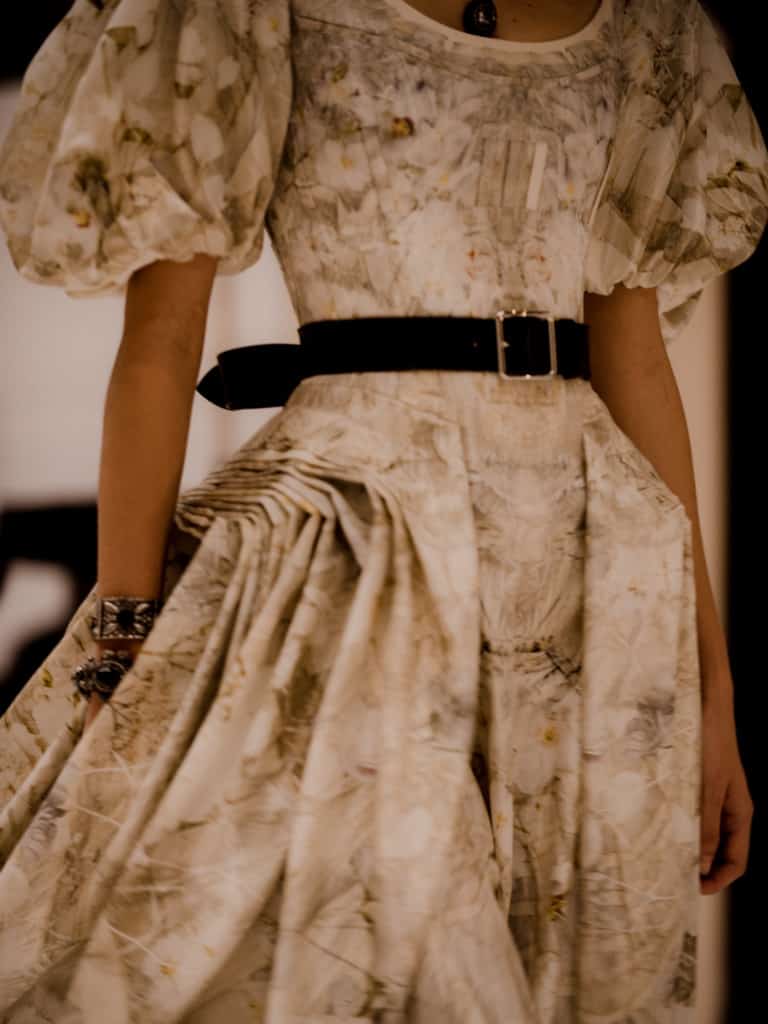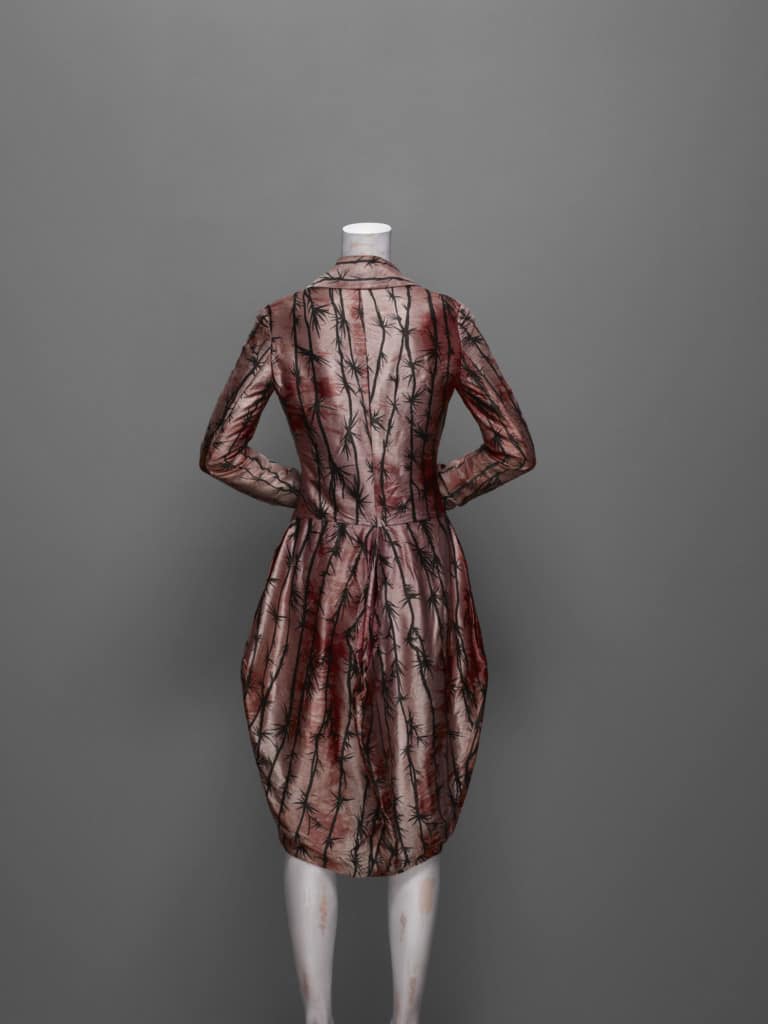In mid-April, Simon Ungless, long-time Alexander McQueen friend and collaborator and the creative behind the extraordinary prints for shows including The Birds and Dante, shared his imagination and expertise in a video tutorial from his home studio.
The video was shown on the Alexander McQueen YouTube channel, and to date has been seen more than 297,000 times.
We asked Simon, Executive Director of the School of Fashion at Academy of Art University, to answer a few questions from him home studio.
You recently collaborated with Alexander McQueen to share your expertise in a video tutorial, shown on the Alexander McQueen YouTube Channel. Why did you agree to do this project?
Sarah Burton asked me to participate in the McQueen Creators series on Instagram, and it sounded fun and engaging and a way for me to revisit that time when I first started working with Alexander McQueen. Since early March and the shelter-in-place, I have been working on a creative project every day and posting on Instagram as a way to connect to the students and show that it is quite possible to survive as a creator without all of the tools and supplies we have around as at school. Lee McQueen and I started working together in our backyard in South London with very limited resources. This time feels the same, back to basics and way for creativity to come from our hands.
Going into it, did you know how wildly popular this project would be?
Alexander McQueen has a high profile and hugely respected but does not seem to participate in the usual social media influencer shenanigans and celebrity connections that other fashion houses do. There is a total authenticity to what they do and I hope I reflect that in what I do. It’s hard to know how an authentic approach will be received in social media but it also depends on how you gauge success. I believe McQueen’s desire was to connect with people in a hands-on creative way and I believe we achieved that.

What’s the one thing you really feel good about that you give your students—the thing that you’re most proud of?
A solid relevant skill set that takes them into the industry.
What motivates you, on a daily basis, to do what you do?
I enjoy what I do and I enjoy who I do it with. When that changes I’ll move on. The Academy offers a unique situation. We are not career educationalists, we are designers and we design and we teach and it works.
Has your curriculum changed over the years? In what ways? And why?
Yes, a great deal. The world changes, industry changes, people change. Education has to change ahead or else become a dinosaur. Our core essence has always maintained in foundation: drawing, color, fabric, cutting and construction–that is fashion but we modify and add curriculum to stay relevant and vital. We are also not afraid to cut curriculum out that is no longer necessary.
What are some things that you are doing in this program that other schools are not?
I think true collaboration, designers from various major working together on projects is something that sets us apart. It reflects in the portfolios and reflects in our graduates’ ability to work as part of a team. We have been one of the first schools to adopt technology such as 3D draping with CLO3D and integrate it into a creative design philosophy. The results speak for themselves. We are based in California, a state with a fearless, pioneer spirit and that reflects in the School of Fashion. We are 10 years ahead other schools, we won competitions before other schools, we went sustainable 20 years ago, we showed on the International show season circuit before other schools, we went online way before other schools. It’s fact.

Loaded question: Fashion schools seem to be at a crossroads—in transition. What’s the future of fashion? What’s the future of fashion education? What is the future of your department? What does a fashion school need to do to survive in today’s environment?
I have a Loaded Answer to your loaded question. I think college education is at a crossroads, not just fashion education. We are in an unusual space. Students now come to school with a very high expectation of what school will provide with a lower expectation on what they will actually need to do to achieve success.
I hate to break the news but education is not like online shopping. You don’t just put your money down and walk away with an education, skill set and portfolio. Participation is necessary. It’s like cooking a meal. You don’t go to the store and buy ingredients, take them home and expect a soufflé to suddenly materialize; you have to open the packaging, measure the right amounts, mix the ingredients together and then bake it in the oven. Fashion school is the same…and once you know the ingredients and can make the soufflé you can mix it up a bit and make something entirely new. We will continue to provide updated, relevant curriculum, stellar facilities and highly skilled faculty. The students have to do the rest.”
Simon Ungless, Executive Director, School of Fashion